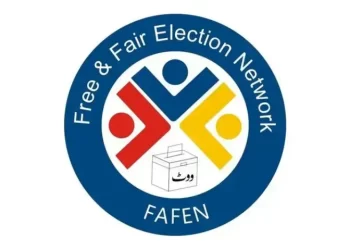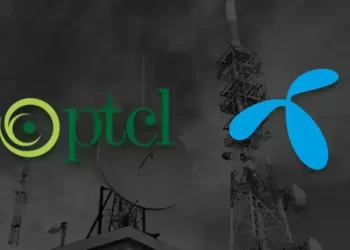But there is one important difference between the two cases: The genocide in Gaza is not taking place in the dark.
While our eyes were on Rafah’s “Block 2371” – the small area in south Gaza which the Israeli military designated as a “safe humanitarian zone” on May 22 but went on to bomb just four days later, massacring at least 45 civilians sheltering in tents – we were reminded of a 15-year-old confidential cable intercepted by WikiLeaks describing the plight of civilians in the final days of the Sri Lankan civil war.
Dispatched in May 2009 from the United States embassy in Colombo to the US Department of State in Washington, DC, the cable recounts how the bishop of Mannar had called to ask the embassy to intervene on behalf of seven Catholic priests caught in a so-called “No Fire Zone” which had been set up as a safe space by the Sri Lankan military.
The bishop estimated that there were still 60,000 to 75,000 civilians confined within that particular zone, located on a small sliver of coastal land about twice the size of Manhattan’s Central Park. Following the bishop’s phone call, the US ambassador spoke with Sri Lanka’s foreign minister, asking him to alert the military that most of the people remaining in the “No Fire Zone” were civilian. He was, it seems, afraid that due to intense artillery shelling the coastal strip had become a death trap.
Not unlike the Israeli military’s efforts to push Palestinian civilians from across the Gaza Strip into the so-called “safe humanitarian zone” in Rafah, at one point, the Sri Lankan military had urged the civilian population to gather in areas it designated as “No Fire Zones” by dropping leaflets from planes and making announcements on loudspeakers.
As an estimated 330,000 internally displaced people assembled in these zones, the United Nations erected makeshift camps and, together with several humanitarian organisations, began to provide food and medical assistance to the desperate population.
The Tamil Tigers, the armed group fighting the Sri Lankan military, however, also appeared to have retreated into these “No Fire Zones”. The fighters had prepared in advance a complex network of bunkers and fortifications in these areas and went on to mount their final stand against the military there.
While the Sri Lankan military claimed that it was engaged in “humanitarian operations” aimed at “liberating the civilians”, an analysis of satellite images as well as numerous testimonies reveal that the military continuously pounded the enclosed “No Fire Zones” with mortar and artillery fire, transforming these designated safe spaces into killing fields.
Anywhere between 10,000 to 40,000 caged-in civilians perished in the so-called safe zones while thousands and thousands more were severely injured often laying for hours and days on the ground without receiving medical attention because virtually every hospital – whether permanent or makeshift – had been hit by artillery.
In both cases, the militaries proceeded to bomb the designated “safe zones,” indiscriminately killing and injuring a large number of civilians.
In both cases, the militaries also bombed medical units responsible for saving the lives of the civilians.
In both cases, military spokespeople justified the strikes, admitting that they had bombed the safe zones, but claiming that the Tamil Tigers and Hamas were responsible for the civilian deaths since they had hidden among the civilian population, using them as shields.
In both cases, Western countries criticised the killing of innocents, but continued supplying the militaries with weapons. In Sri Lanka’s case, Israel was among the main suppliers of weapons.
In both cases, the UN claimed that the warring parties were carrying out war crimes and crimes against humanity.
In both cases, the governments mobilised a cadre of experts who used legal acrobatics to justify the massacres. Their interpretation of the rules of engagement and of the application of fundamental concepts of international humanitarian law including distinction, proportionality, necessity and the very notions of safe zones and warnings were put in the service of eliminatory violence.
But there is also one important difference between the two cases.
Media outlets have already shown how the “safe area” south of Wadi Gaza has been pummelled by 2,000-pound bombs, killing thousands of Palestinians.
The International Criminal Court (ICC) has collected evidence and is now seeking arrest warrants against Israeli Prime Minister Benjamin Netanyahu and Defence Minister Yoav Galant for their alleged war crimes and crimes against humanity.
The International Court of Justice (ICJ) has observed Israel’s deployment of relentless violence against civilians and ordered the government to “immediately halt” its offensive in Rafah, specifying that its actions have not been sufficient “to alleviate the immense risk [including the risk of not being protected by the Genocide Convention] to which the Palestinian population is exposed as a result of the military offensive in Rafah”.
Israel responded to the ruling of the highest court of the land by continuing its bombing of safe zones. The Block 2371 massacre came only 48 hours after the ICJ order. Less than a fortnight later, another Israeli air attack on a UN-run school in the Nuseirat camp, which had also been designated as a “safe zone”, killed at least 40 people, mainly women and children. On June 9, an Israeli operation to free four Israeli captives at the same camp claimed the lives of 274 Palestinians and injured hundreds of others.
All eyes are on Rafah, and the rest of the devastated Gaza Strip, yet Israel is undeterred, carrying out its crimes under the limelight, while the US, the United Kingdom, France and Germany continue to supply it with weapons.
The ICJ and ICC have had their say, as have South Africa, Spain, Ireland, Slovenia and Norway. The university encampments and the global solidarity movement are calling on their governments to apply an arms embargo and demand a ceasefire as they witness how Israel has transformed the safe zones it has created into killing fields.
Like in other situations of extreme colonial violence, Israel’s acceleration of its extermination practices in Gaza and its clumsy attempt to portray it as abiding by the law are symptoms of the twilight of its dispossession project. Former colonial powers like the UK, France and Germany should know that. The US should know that. All eyes are on Gaza. All eyes are on them, too.
The views expressed in this article are the author’s own and do not necessarily reflect media’s editorial stance.








